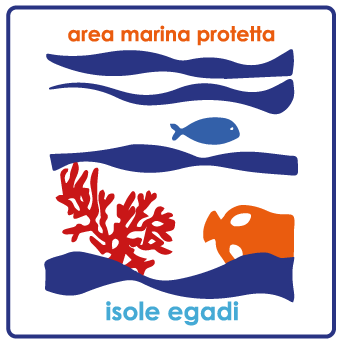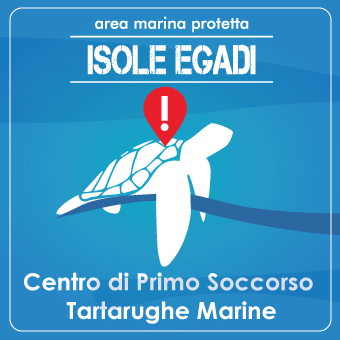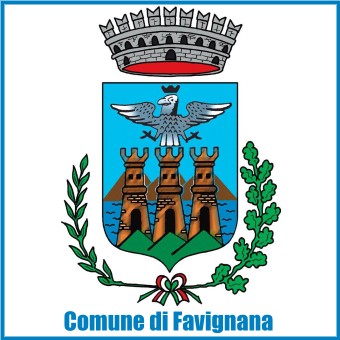
The stretch of sea between Favignana, Levanzo and Marettimo backdrop of war in 241 A.C.. seen from the Castle of Punta Troia Marettimo
Rome and Carthage: the battle of the Egadi from the history books to research on the seabed
The battle of the Egadi
And the 10 March 241 A.C., a momentous day for Sicily, the time when Sicily became a land "Western" where stands already austere physiognomy of Rome.
The battle of the Egadi is one of those events that, by Polybius onwards, They have fueled the debate about the Punic wars, their causes and geopolitical turning point that ensued, and they have fired the imagination of the people especially the spectacular events of war.
The Carthaginians were besieged Amilcare the north-eastern crags of Mount Erice overlooking the city of Trapani (l’antica Drepanum). The Romans were holding firmly the western slopes and the summit in enemy hands, leaving only a corridor that gave access to the sea near present Bay of Bonagia. The situation is getting worse with the arrival of the Roman fleet occupying the waters off Drepanum and shaves Lilibeo. The entire west coast of the island remains so cut off from any connection with Carthage; Lilibeo, key sea and air hub in Sicily Punic, It remains without outlets due to the Roman block.
The Carthaginians attempt to do anything to help Amilcare closed on Mt.. In this regard, they establish a naval force to Admiral Hanno command that, game from Carthage, reach Marettimo (Hiera) where wind and sea favorable expectations for the last leap to Sicily to rescue their compatriots.
Lutatius Catulo understands the course of the Punic ships, the hiera, naturally avoiding the patrolled coast between Drepana and Lilibeo, They would back Erice, expanding the navigation beam at the northeastern entrance of the Tower of Bonagia: it was necessary to cut off the route, turning the strong south-west wind in favor of the Romans, while propitious to enemy sails, would not have, however, he lightened the heavy load of provisions in case of a surprise attack.
The clash took place in North Levanzo where the archaeological research carried out in collaboration with the RPM Nautical Foundation have highlighted the evidence now dispel all doubts about the kinetics of the battle royal.
Lutatius Catulo hid behind the high amount of Levanzo Capo Grosso and, when he saw the enemy come full sail gave orders to cut the mooring lines and set sail in a hurry to hit the enemy ships abeam. It took little to trigger confusion and dismay among sailors Carthaginians. Panicked part of the fleet returned to Carthage, part of it was destroyed or captured by Lutatius Catulo. The episode ended the First Punic War between the Carthaginians and Romans.
 Il 12th face, the last of the series, recovered off Levanzo.
Il 12th face, the last of the series, recovered off Levanzo.
The bronze rostrum was recovered where for years it is believed had taken place the Battle of the Egadi between the Romans and Carthaginians, a 80 meters deep, in waters north - west of the island of Levanzo. This important finding confirms the veracity of the assumptions and adds an important piece to the cultural heritage of Sicily. The rostrum has a decoration consists of a helmet with three feathers in high relief on the upper sheath where there is also the entry which bears the name of the superintendent that contributed financially to the realization of the deadly weapon from naval warfare.
The exhibit presents the novelty among those identified to date to have the wooden part of the bow of the ship inside. Its extraction and subsequent study will provide valuable information on naval technology worked to build the warships at that time. They already notice the ends of the keel, of the stem, of the two side walls and the beam ramming. Il face, visibly damaged by the action of war, he fought the 10 March 241 A.C..
Another page of history was revealed through the systematic collaboration between historians, archaeologists with the now indispensable aid of electronics and oceanographic technology in the context of a fruitful collaboration between the Superintendent of the Sea and the RPM Nautical Foundation US. (ed. See article on press conference)
Text: Superintendent of the Sea – Sicilian region
n.d.r.: you can relive the Battle of the Egadi Favignana at the Museum of the Tonnara Florio where a movie is projected in three dimensions during the tour in a special room.
To learn more visit the Museum's website or our article: The Museum of the Tonnara of Favignana, where you can relive the story of a fantastic era.

































